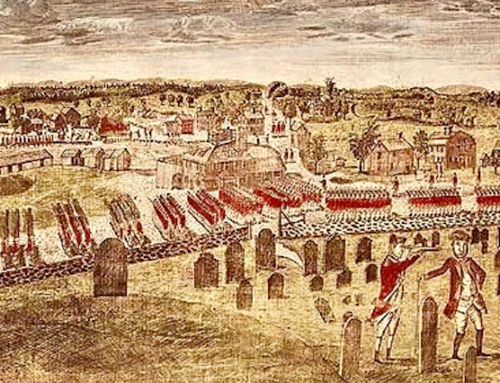The Rhine River was the line of no return—once the paratroopers of the 17th Airborne crossed it, they’d be over enemy territory. Some pretended to sleep while others smoked or just stared into space. No one spoke. The roar of the engines and the rattling of the airframe made conversation impossible, which was just fine. Most were dwelling on their own thoughts anyway.
The following is an excerpt from the Prologue to James M. Fenelon’s Four Hours of Fury: The Untold Story of World War II’s Largest Airborne Invasion and the Final Push into Nazi Germany (Scribner, 2019, 448 pages), and is republished with gracious permission from the author. —Editor
 On Saturday, March 24, 1945, an armada of over 2,000 Allied aircraft droned through the bright morning sky over Belgium. Seventeen thousand airborne troops sat crammed in the cargo holds waiting to be dropped via parachute and glider into Germany. Consisting of transport planes and more than 1,300 towed gliders, the line of aircraft stretched back to the horizon for hundreds of miles. Flying at an altitude of just a thousand feet, the swarm generated a buzz that seemed to announce the fleet’s arrival from every direction. Fighter escorts, biding their time and scanning for enemy aircraft, flew in lazy patterns above the staggered formations of lumbering transports.
On Saturday, March 24, 1945, an armada of over 2,000 Allied aircraft droned through the bright morning sky over Belgium. Seventeen thousand airborne troops sat crammed in the cargo holds waiting to be dropped via parachute and glider into Germany. Consisting of transport planes and more than 1,300 towed gliders, the line of aircraft stretched back to the horizon for hundreds of miles. Flying at an altitude of just a thousand feet, the swarm generated a buzz that seemed to announce the fleet’s arrival from every direction. Fighter escorts, biding their time and scanning for enemy aircraft, flew in lazy patterns above the staggered formations of lumbering transports.
Spearheading what Allied commanders hoped would be the final offensive in Europe, the transports carried troops from two elite divisions: the British 6th and the American 17th Airborne. Both were to be dropped over the same patch of German farmland five miles deep by six miles wide on the far banks of the Rhine River. As part of the largest operation since the Normandy invasion, the airborne units were to seize a bridgehead on the enemy side of the river and hold it until ground forces surged across the 400-yard width of the Rhine.
While the Allies had conducted several airdrops during the war, this was the first into the enemy’s homeland. They were invading, not liberating, and the stakes were high. Nazi propaganda broadcasts made it clear that the element of surprise had been lost. The enemy was waiting for them. In addition to the expected 55,000 dug-in Wehrmacht troops, would fanatical German civilians attack with hunting rifles and pitchforks? Or would they cower in their basements? No one knew.
Sergeant John Chester and 384 other GIs of his battalion flew steadily on toward their drop zone in forty-two C-47 transports. Chester, a confident twenty-four-year-old section chief, occupied his time by writing a few postcards. Wanting to capture the novelty of his first combat jump, he scribbled the same note to both his mother and Kay, his gal back home in Missouri: “I am writing from a plane. We will drop into Germany soon. Hope to be seeing you soon. I love you.”
Tucking away the postcards, Chester rested one hand on the buckle of his safety belt, remembering how he’d fought to stand up during his third training jump. Mortified by his body’s unwillingness to rise to the occasion, panic had flooded through him before he realized he hadn’t unfastened the buckle. That wouldn’t happen today.
Chester knew most of the men in the plane, having trained and fought with them since 1943. Some pretended to sleep while others smoked or just stared into space. No one spoke. The roar of the engines and the rattling of the airframe made conversation impossible, which was just fine. Most were dwelling on their own thoughts anyway….
The Rhine was the line of no return—once they crossed it, they’d be over enemy territory. More than ten minutes of flight time remained until they reached their drop zone, but given the possibility of getting shot down, they had to be ready to jump at any moment.
This essay was first published here in March 2020.
The Imaginative Conservative applies the principle of appreciation to the discussion of culture and politics—we approach dialogue with magnanimity rather than with mere civility. Will you help us remain a refreshing oasis in the increasingly contentious arena of modern discourse? Please consider donating now.
The featured image is a still from the embedded video above.








My uncle, who was born in Germany, was in the 507PIR and jumped during Operation Varsity. He also jumped on D-day when the 507PIR was part of the 82nd Airborne.
That soldier on the left looks as though he should still be in high school.